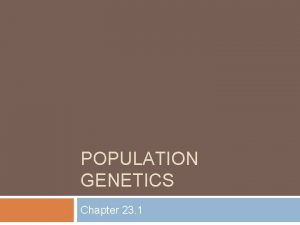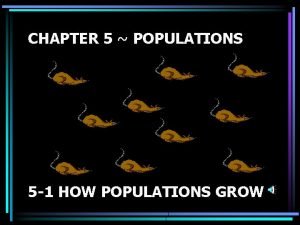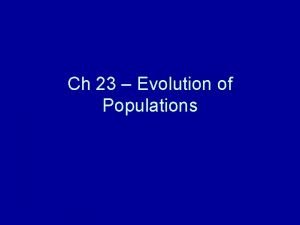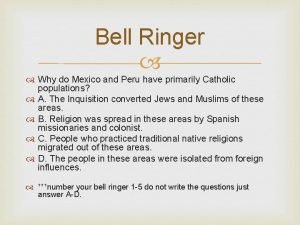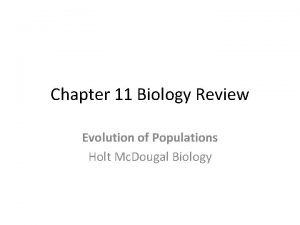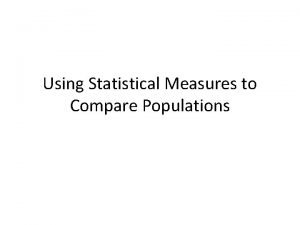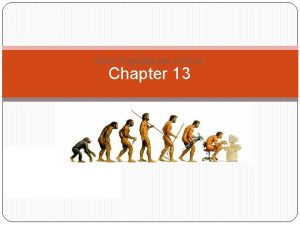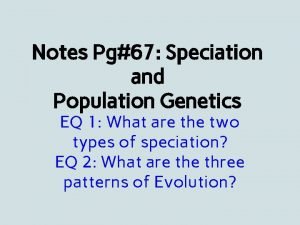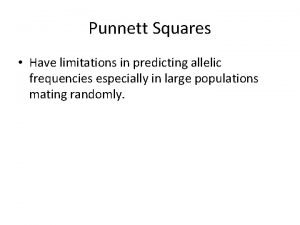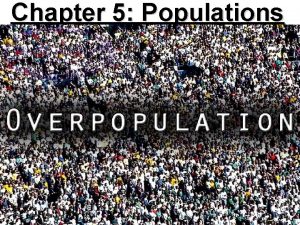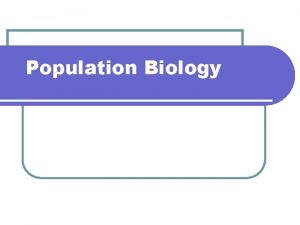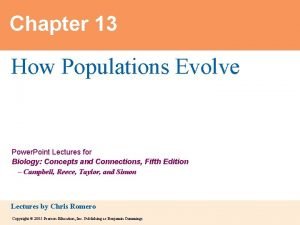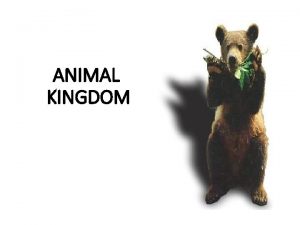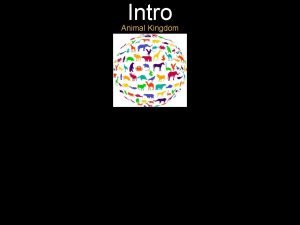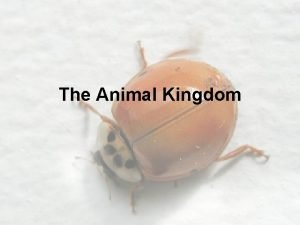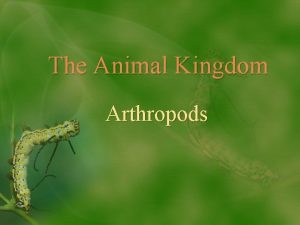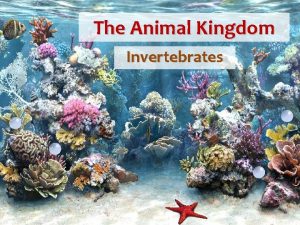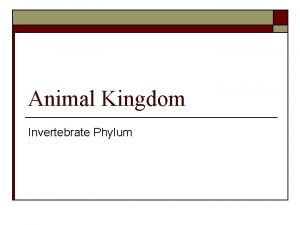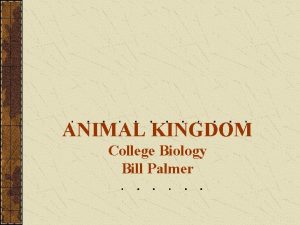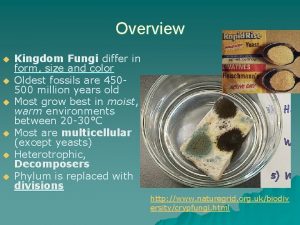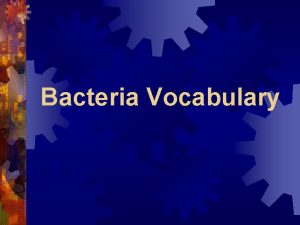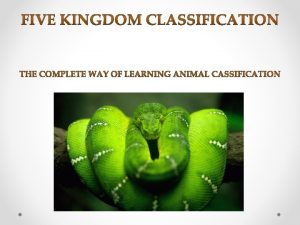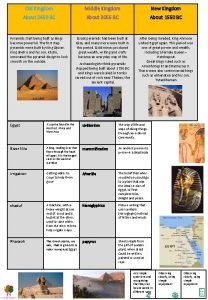Animal Kingdom How do animal populations differ Kingdom
























- Slides: 24

Animal Kingdom How do animal populations differ?

Kingdom Animalia § Within the Animal Kingdom there approximately 35 sub-divisions called “Phyla”; each phylum sub-division shares particular structural and functional properties which together separate it from other phyla. § There are 9 main phyla in the Animal kingdom:

Kingdom Animalia § Porifera – These are the salt-water sponges; there approximately 8, 000 separate species existing today.

Kingdom Animalia § Porifera – These are the salt-water sponges; there approximately 8, 000 separate species existing today. § Cnidaria- This group is composed of jellyfish, and other lower aquatic animals; approx 15, 000 species exist today

Kingdom Animalia § Porifera – These are the salt-water sponges; there approximately 8, 000 separate species existing today. § Cnidaria- This group is composed of jellyfish, and other lower aquatic animals; approx 15, 000 species exist today § Platyhelminthes – These are the flatworms which inhabit both marine and freshwater habitats; over 15, 000 species exist today.

Kingdom Animalia § Porifera – These are the salt-water sponges; there approximately 8, 000 separate species existing today. § Cnidaria- This group is composed of jellyfish, and other lower aquatic animals; approx 15, 000 species exist today § Platyhelminthes – These are the flatworms which inhabit both marine and freshwater habitats; over 15, 000 species exist today. § Nematodes – This phylum consists mainly of about 80, 000 known parasitic worms.

§ Mollusca – This major group consists of snails, clams, squid, and octopus; there are over 110, 000 known species.

§ Mollusca – This major group consists of snails, clams, squid, and octopus; there are over 110, 000 known species. § Annelida – About 15, 000 individual segmented worms comprise this phylum; the common earthworm is an example.

§ Mollusca – This major group consists of snails, clams, squid, and octopus; there are over 110, 000 known species. § Annelida – About 15, 000 individual segmented worms comprise this phylum; the common earthworm is an example. § Arthropoda – This very large group consists of insects; it is estimated that there are over 1 million species of insects existing today.

§ Echinodermata – These are the marine starfish; about 6, 000 species exist today.

§ Echinodermata – These are the marine starfish; about 6, 000 species exist today. § Chordata – This is a group of animals which are classified on the basis of possessing 3 common embryological features – dorsal nerve cord, supportive structure called the notocord, and pharyngeal gill pouches. Within this phylum is a highly-advanced group called the `vertebrates' which include fish, amphibians, reptiles, birds, and mammals; it is this phylum to which the human organism belongs.


Phylum Porifera - Sponges § Structure

Phylum Porifera - Sponges § Structure – Bodies of sponges are supported by a network of spikes.

Phylum Porifera - Sponges § Structure – Bodies of sponges are supported by a network of spikes. – Has pores

Phylum Porifera - Sponges § Reproduction

Phylum Porifera - Sponges § Reproduction – Asexually by budding

Phylum Porifera - Sponges § Reproduction – Asexually by budding – Sexually

Phylum Porifera - Sponges § Reproduction – Asexually by budding – Sexually § Sponges do not have separate sexes but a single sponge produces eggs at one time of the year and sperm at a different time.


Phylum Porifera - Sponges § Getting Food and Oxygen from Water

Phylum Porifera - Sponges § Getting Food and Oxygen from Water – Feed by straining food particles from water

Phylum Porifera - Sponges § Getting Food and Oxygen from Water – Feed by straining food particles from water – Oxygen from the water moves into the sponges cells

Phylum Porifera - Sponges § Getting Food and Oxygen from Water – Feed by straining food particles from water – Oxygen from the water moves into the sponges cells – Move reproductive cells
 Old kingdom middle kingdom new kingdom
Old kingdom middle kingdom new kingdom Old kingdom middle kingdom new kingdom
Old kingdom middle kingdom new kingdom Mentohotep
Mentohotep Old kingdom middle kingdom new kingdom
Old kingdom middle kingdom new kingdom Similarities between protists and fungi
Similarities between protists and fungi Share
Share What do kingdom fungi and kingdom plantae share
What do kingdom fungi and kingdom plantae share What is the odds and ends kingdom
What is the odds and ends kingdom Genetic drift in small populations
Genetic drift in small populations A biologist discovers two populations of wolf spiders
A biologist discovers two populations of wolf spiders Complex patient populations
Complex patient populations Chapter 5 lesson 1 how populations grow
Chapter 5 lesson 1 how populations grow Individuals don't evolve populations do
Individuals don't evolve populations do Why are populations the smallest unit of evolution
Why are populations the smallest unit of evolution Chapter 21 vulnerability and vulnerable populations
Chapter 21 vulnerability and vulnerable populations Edward jenner’s innovation helped to
Edward jenner’s innovation helped to Evolution of populations section 11 review
Evolution of populations section 11 review Using statistical measures to compare populations
Using statistical measures to compare populations Chapter 13 how populations evolve test
Chapter 13 how populations evolve test Speciation
Speciation Limitations of punnett squares in large populations
Limitations of punnett squares in large populations Parasitism
Parasitism Chapter 23 the evolution of populations
Chapter 23 the evolution of populations Population definition
Population definition Chapter 13 how populations evolve
Chapter 13 how populations evolve








